
Atmospheric Measurement Techniques
Scope & Guideline
Advancing the Frontiers of Atmospheric Science.
Introduction
Aims and Scopes
- Atmospheric Composition Measurement:
Research on measuring trace gases, aerosols, and clouds using ground-based and satellite-based instruments, including validation studies and new retrieval algorithms. - Remote Sensing Innovations:
Development and application of remote sensing technologies, particularly lidar and spectrometry, for atmospheric profiling and monitoring, focusing on gases like CO2, CH4, and NO2. - Field Campaign Studies:
Conducting extensive field campaigns to collect data on atmospheric phenomena, including the impact of aerosols and clouds on climate, air quality, and weather patterns. - Modeling and Data Assimilation:
Integration of observational data into atmospheric models to improve predictions and understand the dynamics of atmospheric processes. - Technological Advancements:
Innovation in measurement technologies, including low-cost sensors and unmanned aerial systems (UAS), to enhance data collection capabilities in various environments. - Interdisciplinary Approaches:
Research that combines expertise from meteorology, environmental science, physics, and engineering to address complex atmospheric challenges.
Trending and Emerging
- Climate Change Impact Studies:
Research exploring the effects of atmospheric composition changes on climate, including greenhouse gas emissions and their influence on global warming. - Machine Learning Applications:
Growing utilization of machine learning techniques for data analysis and retrieval algorithms, enhancing the accuracy of atmospheric measurements and predictions. - Use of Uncrewed Aerial Systems (UAS):
Increased studies utilizing drones for atmospheric profiling and monitoring, allowing for high-resolution data collection in hard-to-reach areas. - Integrated Remote Sensing:
Emerging focus on combining multiple remote sensing techniques (e.g., satellite and ground-based) to improve atmospheric data retrieval and validation. - Aerosol and Cloud Interaction Studies:
Research on the interactions between aerosols and clouds, particularly their role in climate forcing and weather patterns, is gaining more attention. - Health Impact Assessments:
A growing trend in linking atmospheric measurements with public health outcomes, particularly concerning air quality and its effects on human health.
Declining or Waning
- Traditional In-situ Monitoring Techniques:
There has been a noticeable decline in the focus on conventional in-situ monitoring techniques as newer technologies and remote sensing methods gain traction. - Static Monitoring Stations:
The use of fixed monitoring stations for air quality measurements is decreasing as mobile and flexible monitoring solutions, like drones and portable sensors, become more prevalent. - Single-parameter Studies:
Research that focuses on single atmospheric parameters without considering the broader context or interactions with other atmospheric components is waning in favor of more integrated approaches. - Laboratory-based Measurement Techniques:
A decrease in papers focusing solely on laboratory experiments as the emphasis shifts toward field measurements and real-world applications.
Similar Journals
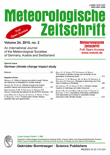
METEOROLOGISCHE ZEITSCHRIFT
Unlocking the Secrets of the AtmosphereMETEOROLOGISCHE ZEITSCHRIFT is a distinguished academic journal dedicated to the field of meteorology and atmospheric sciences, published by E SCHWEIZERBARTSCHE VERLAGSBUCHHANDLUNG. With an ISSN of 0941-2948 and an E-ISSN of 1610-1227, this journal has been an invaluable resource for researchers, professionals, and students since its inception. It has embraced an Open Access model since 2014, promoting wider dissemination of research findings. Based in Stuttgart, Germany, the journal is recognized for its rigorous peer-review process and is currently positioned in the Q3 quartile for Atmospheric Science as per the 2023 category rankings. Additionally, it ranks #97 out of 148 in the Scopus database, placing it in the 34th percentile among Earth and Planetary Sciences. Covering a broad spectrum of topics relevant to meteorology, METEOROLOGISCHE ZEITSCHRIFT serves as a platform for innovative research and theoretical contributions, aiming to advance understanding of atmospheric phenomena and their implications for climate and weather. Researchers and practitioners alike will find valuable insights within its pages, making it a significant asset in the landscape of meteorological scholarship.
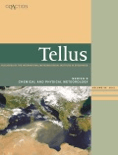
TELLUS SERIES B-CHEMICAL AND PHYSICAL METEOROLOGY
Connecting researchers to elevate atmospheric science.TELLUS SERIES B-CHEMICAL AND PHYSICAL METEOROLOGY, published by Stockholm University Press, is a leading open-access journal dedicated to the advanced study of atmospheric sciences, specializing in the chemical and physical aspects of meteorology. With an ISSN of 1600-0889, this journal has been committed to disseminating high-quality research since its transition to open access in 2012, ensuring that cutting-edge discoveries are freely available to the global research community. The journal's scope encompasses a wide range of topics within meteorology, attracting contributions from both established and emerging researchers in the field. The importance of this journal lies in its ability to bridge gaps in knowledge and foster collaboration among scientists, making it an essential resource for professionals and students alike who seek to deepen their understanding of atmospheric phenomena. For submissions and further information, please refer to the Stockholm University Press website.

IZVESTIYA ATMOSPHERIC AND OCEANIC PHYSICS
Unraveling the complexities of our planet's systems.Izvestiya Atmospheric and Oceanic Physics is a distinguished journal dedicated to advancing the fields of atmospheric science and oceanography, published by MAIK Nauka/Interperiodica/Springer. With a rich publication history spanning from 1972 to the present, this journal serves as a vital platform for both theoretical and experimental studies that enhance our understanding of complex atmospheric and oceanic systems. Despite its current categorization in the Q4 quartile according to the 2023 rankings, the journal continues to provide crucial insights, as evidenced by its established ranks in Scopus—placing it in the 15th and 26th percentiles of its respective categories. Researchers, professionals, and students alike are encouraged to contribute to and engage with the latest findings published in this journal, fostering a collaborative spirit within the scientific community dedicated to tackling pressing environmental challenges.
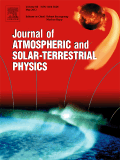
JOURNAL OF ATMOSPHERIC AND SOLAR-TERRESTRIAL PHYSICS
Charting New Frontiers in Geophysics and Space ResearchJournal of Atmospheric and Solar-Terrestrial Physics, published by Pergamon-Elsevier Science Ltd, stands as a pivotal academic resource in the realms of Atmospheric Science, Geophysics, and Space and Planetary Science. With an ISSN of 1364-6826 and an E-ISSN of 1879-1824, this journal encompasses a robust collection of research findings and reviews that address the intricacies of atmospheric processes and solar-terrestrial interactions. The journal has shown consistent academic performance, earning commendable rankings in 2023, including Q3 in Atmospheric Science and Q2 in Geophysics, reflecting its importance for scholarly communication and advancement in these fields. Spanning an impressive convergence of research from 1997 to 2024, it aims to foster interdisciplinary collaboration and inspire innovations among researchers, professionals, and students. Although it currently does not offer open access, the journal is committed to disseminating high-quality content that continues to drive forward our understanding of complex environmental phenomena.

Atmosphere-Korea
Pioneering Discoveries in Environmental ScienceAtmosphere-Korea is a prestigious journal published by the Korean Meteorological Society, dedicated to advancing the field of atmospheric sciences. With a focus on both theoretical and applied research, this journal encompasses a wide range of topics including meteorology, climatology, and environmental science, providing a platform for researchers to disseminate their findings and enhance scientific dialogue. Although currently not categorized under an open access model, the journal ensures that all articles meet rigorous scientific standards, thereby maintaining its credibility and academic integrity. The ISSN 1598-3560 and E-ISSN 2288-3266 identify its unique contributions to global knowledge in meteorology. Researchers, professionals, and students alike benefit from the invaluable insights offered through its publications, making Atmosphere-Korea an essential resource in understanding climatic phenomena and their implications for society.

Atmosphere is a premier open-access journal dedicated to the field of atmospheric sciences, published by MDPI since 2010. With an E-ISSN of 2073-4433, the journal has established itself as a significant platform for the dissemination of research on atmospheric processes, climate change, and environmental dynamics. Based in Switzerland, the journal has garnered impressive recognition within the academic community, currently ranked in the 3rd quartile for Atmospheric Science and the 2nd quartile for Environmental Science (miscellaneous) as of 2023. Notably, it holds a commendable Scopus rank, emphasizing its impact with a 69th percentile standing in its category. Atmosphere aims to foster innovative research and comprehensive reviews that contribute to the understanding of air quality, climate policy, and environmental sustainability. Its open-access model not only supports the global sharing of knowledge but also enhances visibility and engagement among researchers, professionals, and students alike, making it an essential resource for anyone invested in the study of our planet's atmosphere.
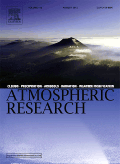
Atmospheric Research
Unraveling the Mysteries of Atmospheric ProcessesAtmospheric Research is a premier journal published by Elsevier Science Inc, specializing in the field of Atmospheric Science. With a commendable impact factor, it holds a distinguished position in the Scopus rankings, being placed 14th out of 148 journals within its category and achieving a remarkable 90th percentile rank. This journal serves as a vital outlet for rigorous research on atmospheric processes, climate variability, and meteorological phenomena, providing a platform for scientists, researchers, and students to disseminate their findings and contribute to the advancement of knowledge in this critical field. Although it is not an open-access journal, its strong reputation and selective publication criteria ensure that only high-quality and impactful studies are featured. Since its inception in 1986, Atmospheric Research has continuously evolved to meet the dynamic nature of atmospheric studies, making it a fundamental resource for anyone engaged in understanding and addressing atmospheric challenges worldwide.

METEOROLOGY AND ATMOSPHERIC PHYSICS
Advancing the Frontiers of Atmospheric ScienceMETEOROLOGY AND ATMOSPHERIC PHYSICS is a premier journal published by SPRINGER WIEN, dedicated to advancing the study of atmospheric phenomena and weather-related sciences. With an ISSN of 0177-7971 and an E-ISSN of 1436-5065, the journal has established itself as an important contributor in the field, particularly noted for its contributions in atmospheric science, holding a Q3 ranking in the 2023 category quartiles. Covering a wide array of topics from meteorological modeling to the physics of the atmosphere, it serves researchers, professionals, and students alike, facilitating the dissemination of significant findings and innovative research. The journal’s acceptance of articles until 2024 encourages a continuous influx of knowledge, and despite its lack of Open Access, it plays a crucial role in enriching the academic landscape for those engaged in Earth and planetary sciences, holding a commendable rank of 78 out of 148 in Scopus. Located in the scenic city of Vienna, Austria, the journal is positioned to harness the vibrancy of the academic community, providing a platform for valuable insights that can drive forward the field of meteorology and atmospheric physics.

Asia-Pacific Journal of Atmospheric Sciences
Pioneering Insights for a Sustainable FutureWelcome to the Asia-Pacific Journal of Atmospheric Sciences, a leading publication in the field of atmospheric science, published by the Korean Meteorological Society. With an ISSN of 1976-7633 and an E-ISSN of 1976-7951, this journal has been a cornerstone for researchers and practitioners in the atmospheric sciences since its inception in 2008. Recognized for its rigorous peer-reviewed articles, it holds a commendable Q2 quartile ranking in 2023 and is placed at the 51st rank out of 148 in the Earth and Planetary Sciences, reflecting its impact within the community with a 65th percentile. The journal features a broad scope encompassing meteorology, climatology, and environmental sciences, making it an essential resource for scholars and industry experts alike. As an open access journal, it ensures that groundbreaking research is widely accessible, fostering collaboration and innovation across the Asia-Pacific region and beyond. Explore the latest findings and advancements in atmospheric sciences and contribute to the dynamic field of climate research through the journal's engaging content.
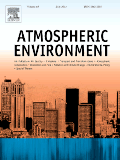
ATMOSPHERIC ENVIRONMENT
Exploring the intersection of air quality and climate change.ATMOSPHERIC ENVIRONMENT is a premier journal dedicated to advancing the field of atmospheric science and environmental studies, published by Pergamon-Elsevier Science Ltd in the United Kingdom. With an impressive impact factor and recent rankings placing it in the Q2 quartile for Atmospheric Science and Q1 for miscellaneous Environmental Science, it stands as a leading source of high-quality research articles that bridge the gap between atmospheric phenomena and environmental issues. The journal, which has been disseminating significant findings since its inception in 1972, emphasizes an interdisciplinary approach, inviting contributions that address the pivotal challenges facing our atmosphere today. Although it does not currently offer open access options, the journal remains accessible through various academic platforms, ensuring that the latest research reaches its vast audience of researchers, professionals, and students who are striving to deepen their understanding of atmospheric processes. With a robust scope that encompasses a range of topics from climate change to air quality management, ATMOSPHERIC ENVIRONMENT is essential reading for anyone committed to fostering sustainable environmental practices and innovative scientific research.